Text
Back to Babylon*
Not sure when I’ll be back to commune-ing. Might be a couple weeks, might be eleven months. It all depends on my job-job and its schedule.
I have a couple more East Wind posts in the works and should get those out over the next few days.
*as we communards call the outside world
2 notes
·
View notes
Text
Commune food -- there’s barely any brand labels
When I first arrived at East Wind, one of the things that immediately stood out to me was the near-total absence of commercial food packages. Like most, I was used to a kitchen filled with logos and brand names, with most everything kept in the same plastic packaging in which it was bought.
It’s not like that here. Let me show what we have instead.
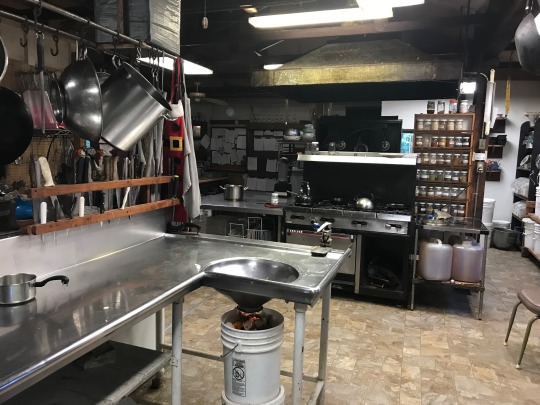
^The kitchen in the main common area (a building called Rock Bottom.) It’s large-scale and industrial in a way that I usually associate with restaurants or the homes of FLDS Mormons.
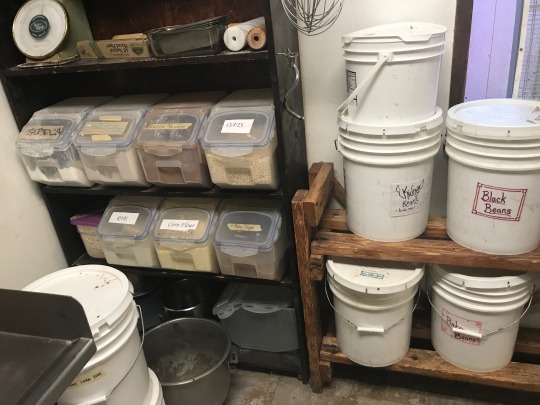
^Ingredients in the kitchen, kept in labeled tubs. When every meal has to be cooked with sixty people in mind, a lot has to be bought in bulk.
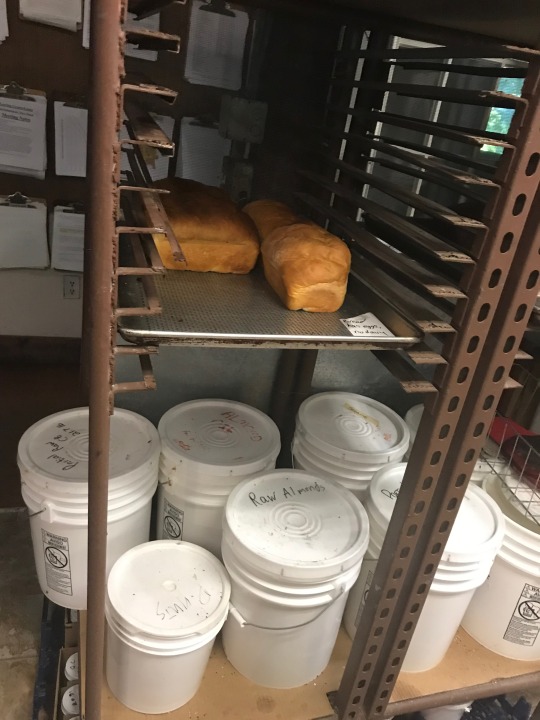
^Community bread, which is baked fresh every morning. People sign up for regular shifts and bake 6 to 8 loaves at a time. There’s no Wonderbread here unless people buy it with their personal money.

^Homemade salad dressing in one of three huge communal refrigerators. Along with a couple rare branded packages.

^Dairy products made from the milk of East Wind’s four dairy cows, homemade cheese, and eggs from the commune’s chickens.
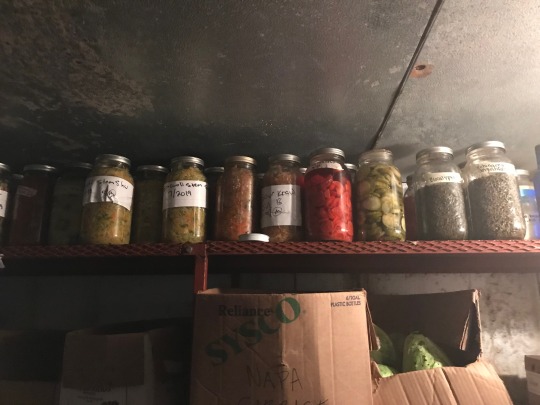
^Long term storage of relishes and preserved vegetables. Since coming here, I’ve seen at least three kinds of kimchi, four kinds of pickles, and something called “fermented radishes” which I haven’t worked up the nerves to try. The sysco box near the bottom of the frame is actually just a re-used box. It’s holding vegetables from the commune’s garden.

^Four representative boxes of home-grown produce in the communal walk-in refrigerator. Onions, zucchini, bell peppers, and tomatoes. East Wind isn’t completely self-sufficient in produce all year round, but right now the gardens are so productive that you wouldn’t know otherwise.
#east wind community#commune food#homesteading#really the coordinated food production and processing is pretty incredible#my next post should have more solid info about what tends to get served for meals#but I'm still working on that
2 notes
·
View notes
Text
A note on the word “commune”
Talk to the average person in the movement, and they’ll probably never use commune to refer to their home. Intentional community or just community is more common.
I prefer to use commune when talking to outsiders because I believe that the connotations of the word are the best match for reality. It allows me to quickly and clearly communicate about the situation.
If I say...
I live on a farm in rural Missouri with a group of about 80 other people. We share living spaces, clothes, and income. Most food comes from the gardens and domesticated animals. Money comes from a peanut butter factory that is owned by the group. Profits are shared equally among everyone. The group has no leader and decisions are made democratically.
...then for better or worse, commune is the word that will come to people’s minds.
A little more in-depth discussion of words is included below.
I think the definition of commune from Wikipedia does a good job of capturing the de facto connotations of the word.
A commune... is an intentional community of people living together, sharing common interests, often having common values and beliefs, as well as shared property, possessions, resources, and, in some communes, work, income or assets.
In addition to the communal economy, consensus decision-making, non-hierarchical structures and ecological living have become important core principles for many communes. There are many contemporary intentional communities all over the world, a list of which can be found at the Fellowship for Intentional Community (FIC).
I particularly like this definition because it emphasizes that the core of a commune is people living together and sharing resources. It acknowledges that members may or may not pool all their income together and may or may not have outside jobs and independently held wealth. Each case is different; I’ve lived at one commune where people held “normal” outside jobs and at one where this was forbidden. It all depends on what the members agree on.
Furthermore, a communard is technically a person who lives in a commune. Among those who don’t use commune, the people are usually called communitarians.
8 notes
·
View notes
Text
Welcome to the blog!
My name is Lucia and I have been living intermittently in communes since 2017.
I started this blog so I’d have a way to share the details of a lifestyle that few people have heard of and even fewer people get to see.
I am an associate member of East Wind Community in Missouri and I live there for a few months of every year. The rest of the time, I am an ordinary member of mainstream society. My current job allows me to the travel a lot, so I hope to visit a number of communes over the next few years.
My far-off dream is to start my own commune someday.
2 notes
·
View notes
Text
I believe I can fly...
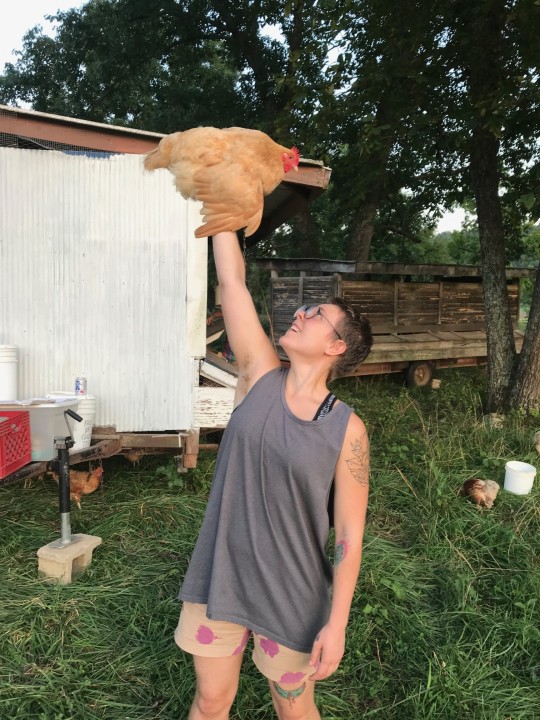
I love how the chicken looks so nonplussed.
#east wind community#this is a buddy of mine not me#i fucking love chickens#they're stupid adorable loaves of bread#as a buddy of mine put it
3 notes
·
View notes